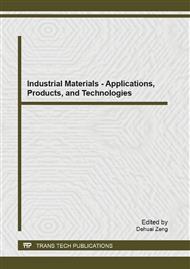p.327
p.332
p.336
p.342
p.349
p.355
p.361
p.365
p.373
Research on the Degradation of Herbicide-Quinclorac by Microorganism
Abstract:
In order to study the degradation of herbicide----Quinclorac using microorganism, separate and screen the degrading bacteria CSUFTM62 from soil, this paper researched the degradation effect of bacterial strain on the Quinclorac under different situations, including different increments, different temperatures, different concentrations of pesticide, different pH, and different additive amount of nutrients. The results show that the optimal degradation temperature is 30 ° C; the optimum pH is 7; the degradation rate of Quinclorac reaches its maximum when the concentration is 50mg / L. Adding yeast extract could increase the amount of strain growth but never affect its degradation effects on Quinclorac; combined with the morphological characteristics, the strains CSUFTM62 is identified as the Stenotrophomonas maltophilia by measuring the 16S sequence.
Info:
Periodical:
Pages:
349-354
Citation:
Online since:
August 2013
Authors:
Keywords:
Price:
Сopyright:
© 2013 Trans Tech Publications Ltd. All Rights Reserved
Share:
Citation:


